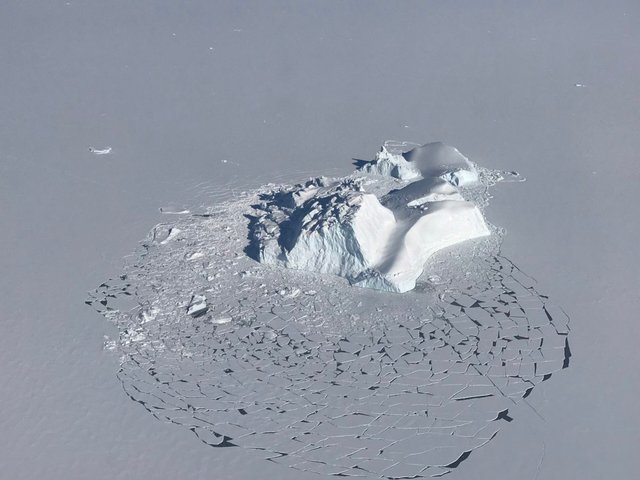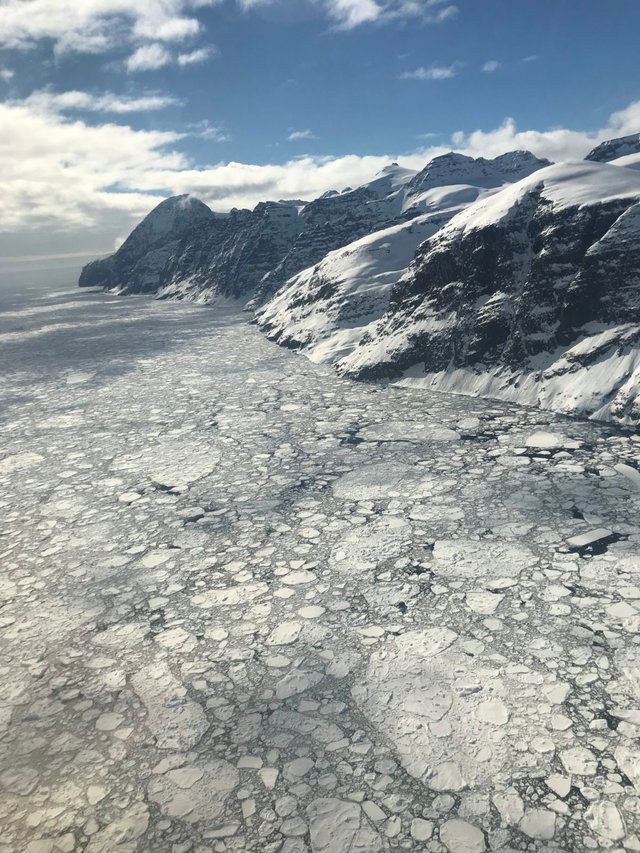Effect of global warming!!!
Linette Boisvert is a sea ice scientist at NASA’s Goddard Space Flight Center in Greenbelt, Maryland, and researcher with Operation IceBridge. The mission of Operation IceBridge, NASA’s longest-running airborne mission to monitor polar ice, is to collect data on changing polar land and sea ice and maintain continuity of measurements between ICESat missions.
These glaciers have carved out deep channels and fjords in the bedrock over time, making for awe-inspiring views and terrain, especially when you are flying in the P-3 plane at just 1500 feet. There were many times where I would look out the window and see mountains reaching high above us as we flew over the glaciers deep in the fjord valleys and other times where it felt as it we were just skimming the tops of the mountains. This is not something that normally happens on commercial airline flights and is not for the faint of heart, but it is spectacular to behold, and I felt truly lucky to be able to witness this magnificent place.
As we flew out of the fjord to where both land ice and land meets sea, I instantly became overjoyed to view the sea ice (go Team Sea Ice!): all thicknesses, broken up, ridged, consolidated and flooded along with numerous leads and icebergs, which are land ice deposited into the ocean from the glaciers. Sea ice on a land ice flight? I think I could get used to this. 
As we crossed the fjords and the sea ice, we noticed multiple polar bear tracks in the snow (likened to a “polar bear highway”), and multiple holes in the sea ice where seals will come out for air and rest. A few people even claimed they saw a polar bear running on the sea ice after being startled by our plane flying over, but I didn’t see it and I am skeptical. Another highlight of this flight was flying past Greenland’s tallest mountain, Gunnbjorn, which rises 12,000 feet, and the “Grand Canyon of Greenland” – the one not covered by kilometers of ice in the center of the ice sheet that data from a previous IceBridge campaign had recently discovered. Needless to say, I was glued to my window for the majority of this flight. These pictures just don’t do them justice.

Specifically, melting land ice flows into the ocean and contributes to global sea level rise, whereas the loss of sea ice affects ocean and atmospheric circulation patterns both locally and globally, reminding us that what happens in the Arctic doesn’t stay in the Arctic.